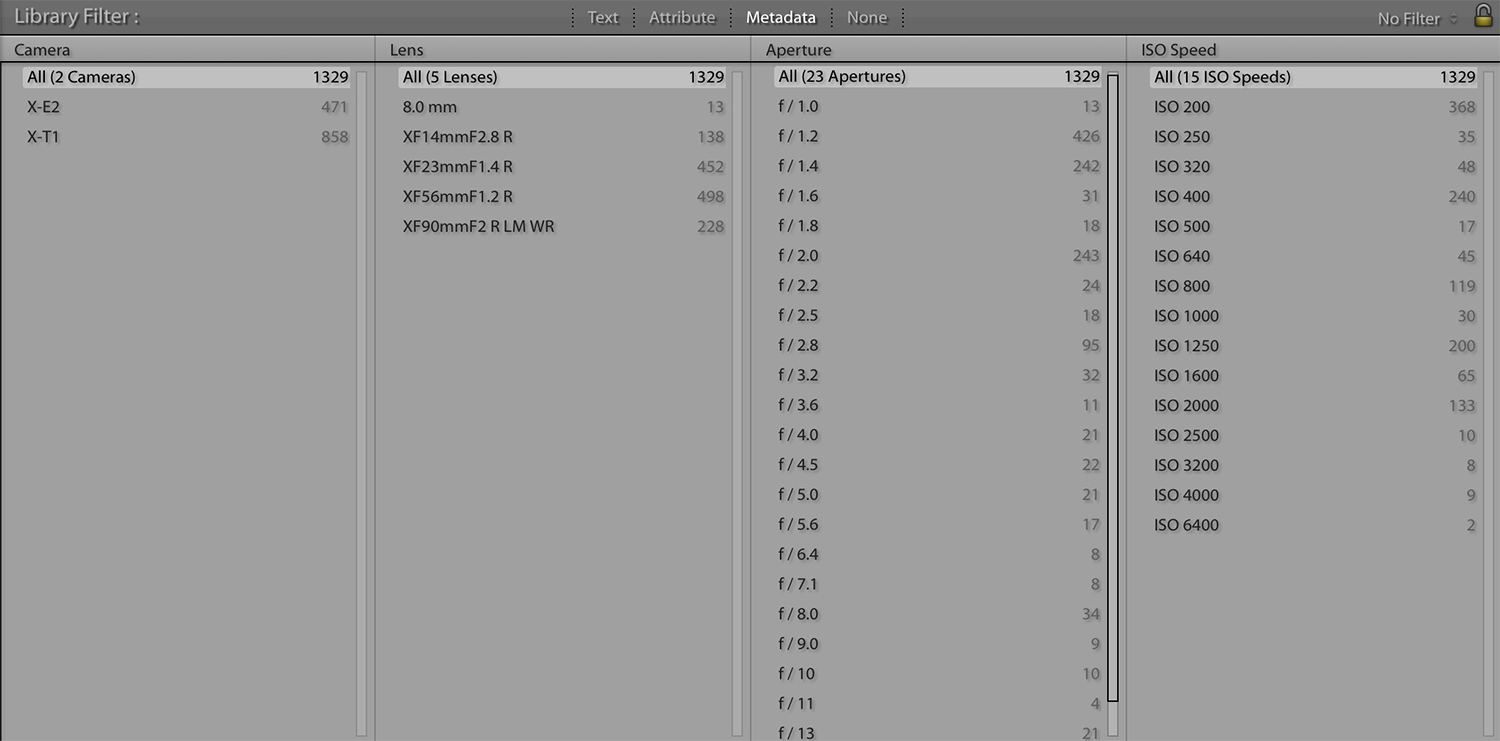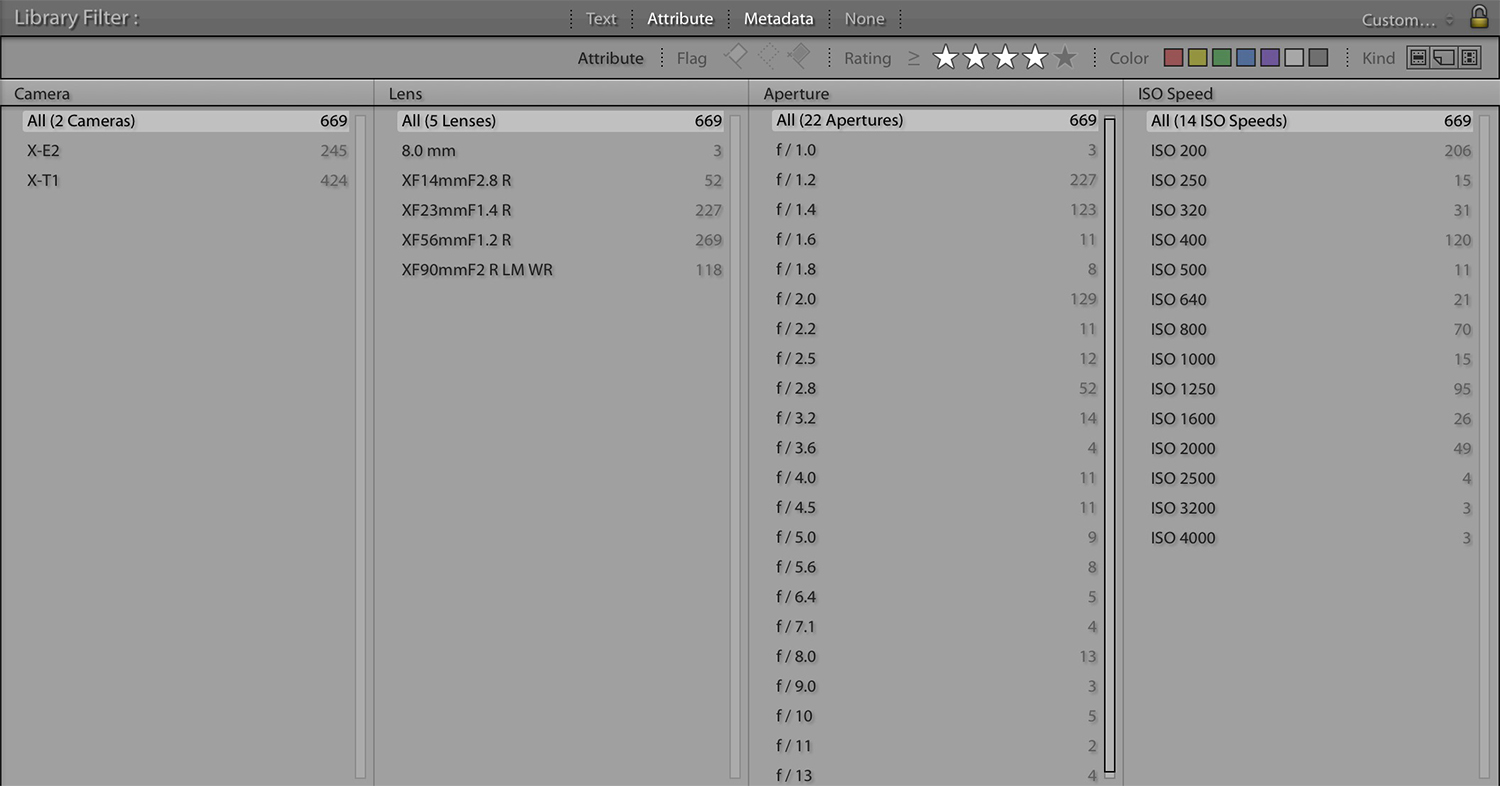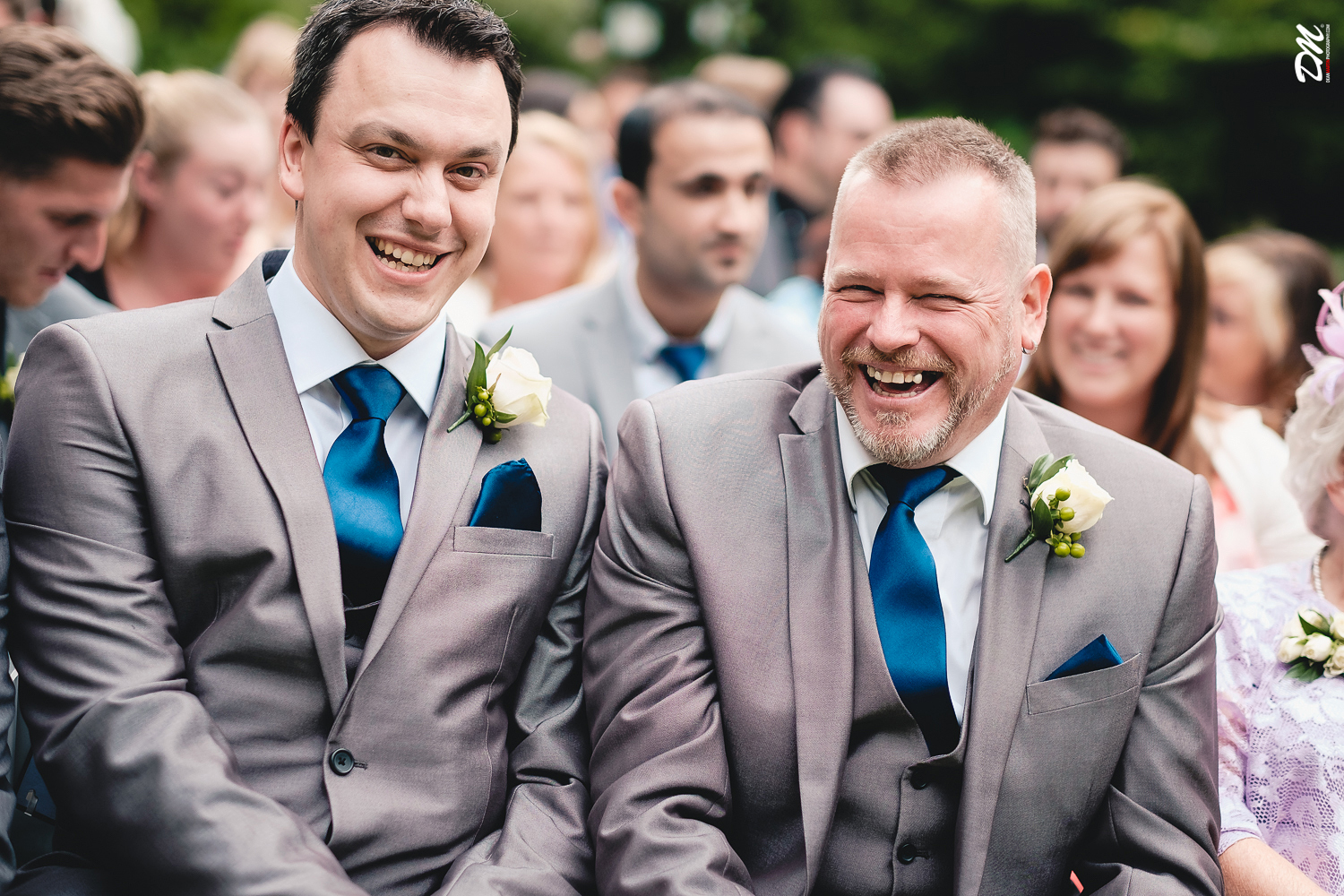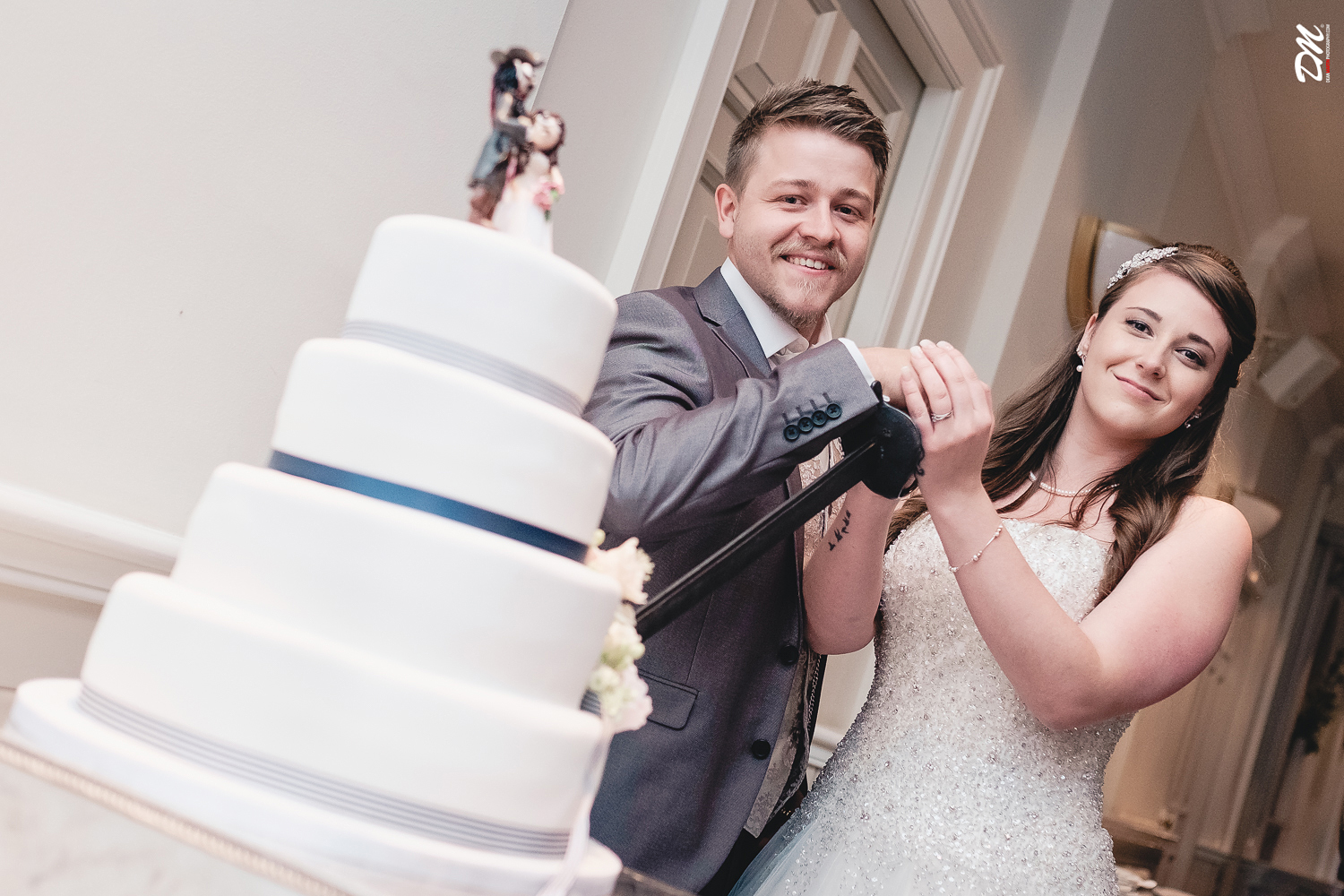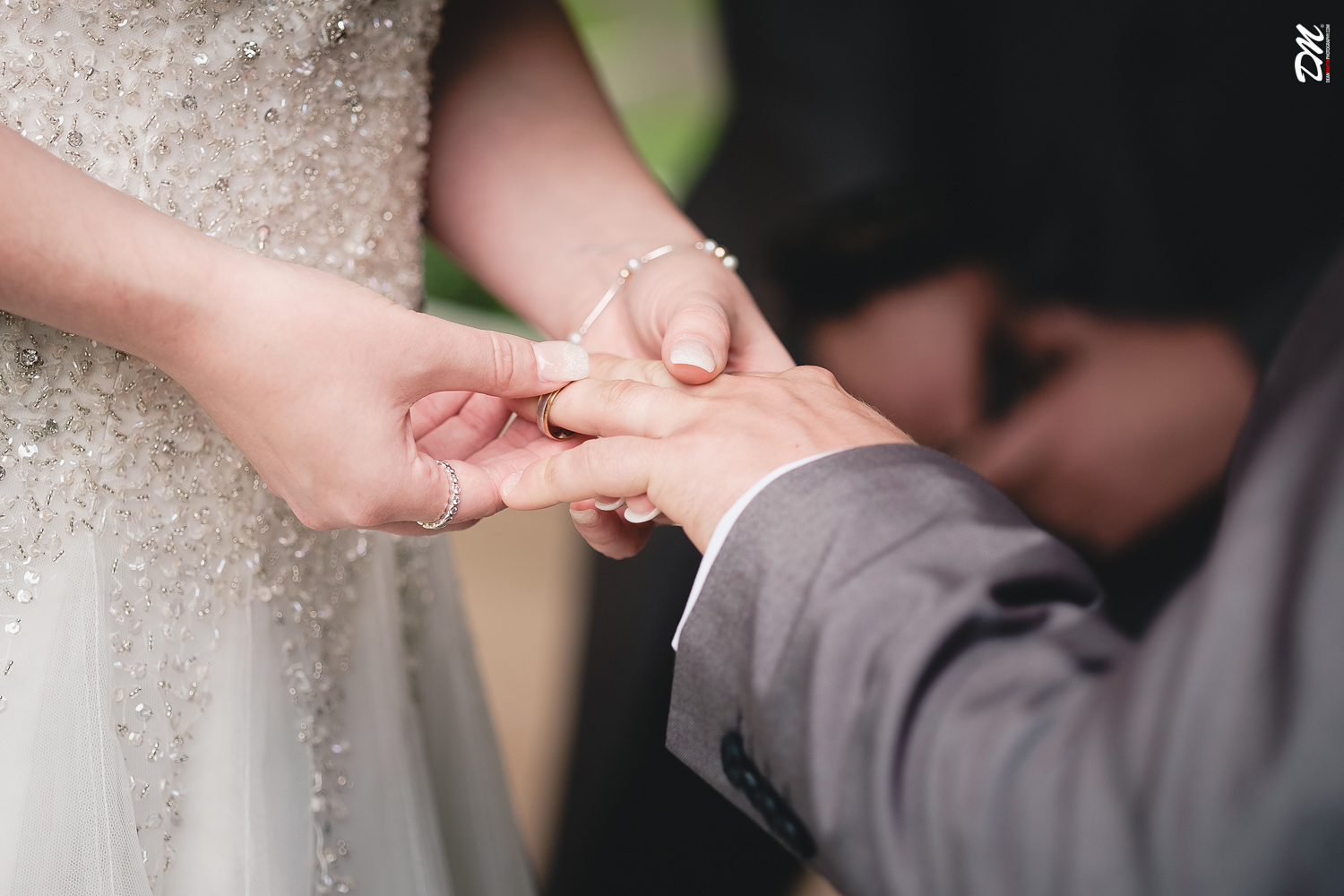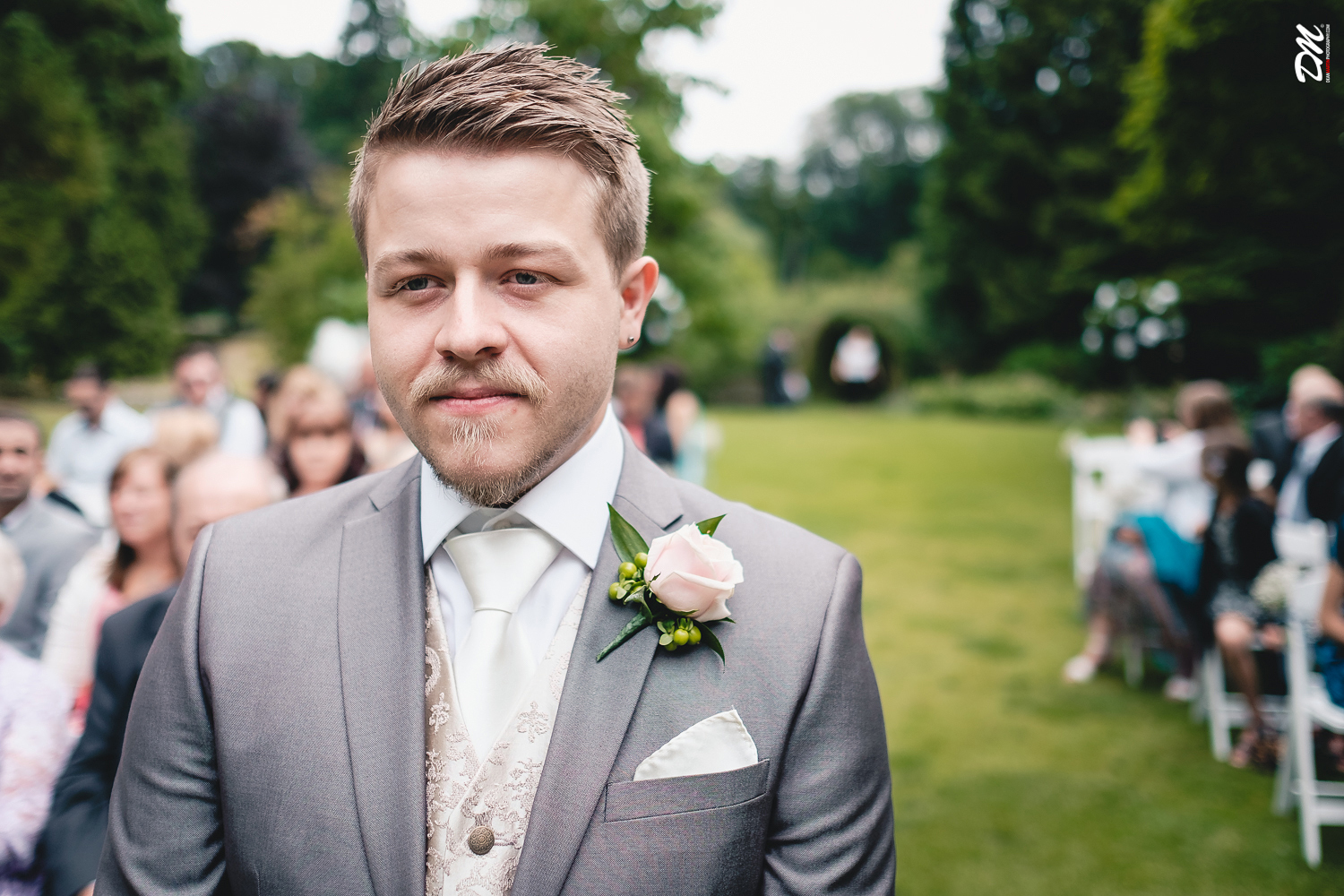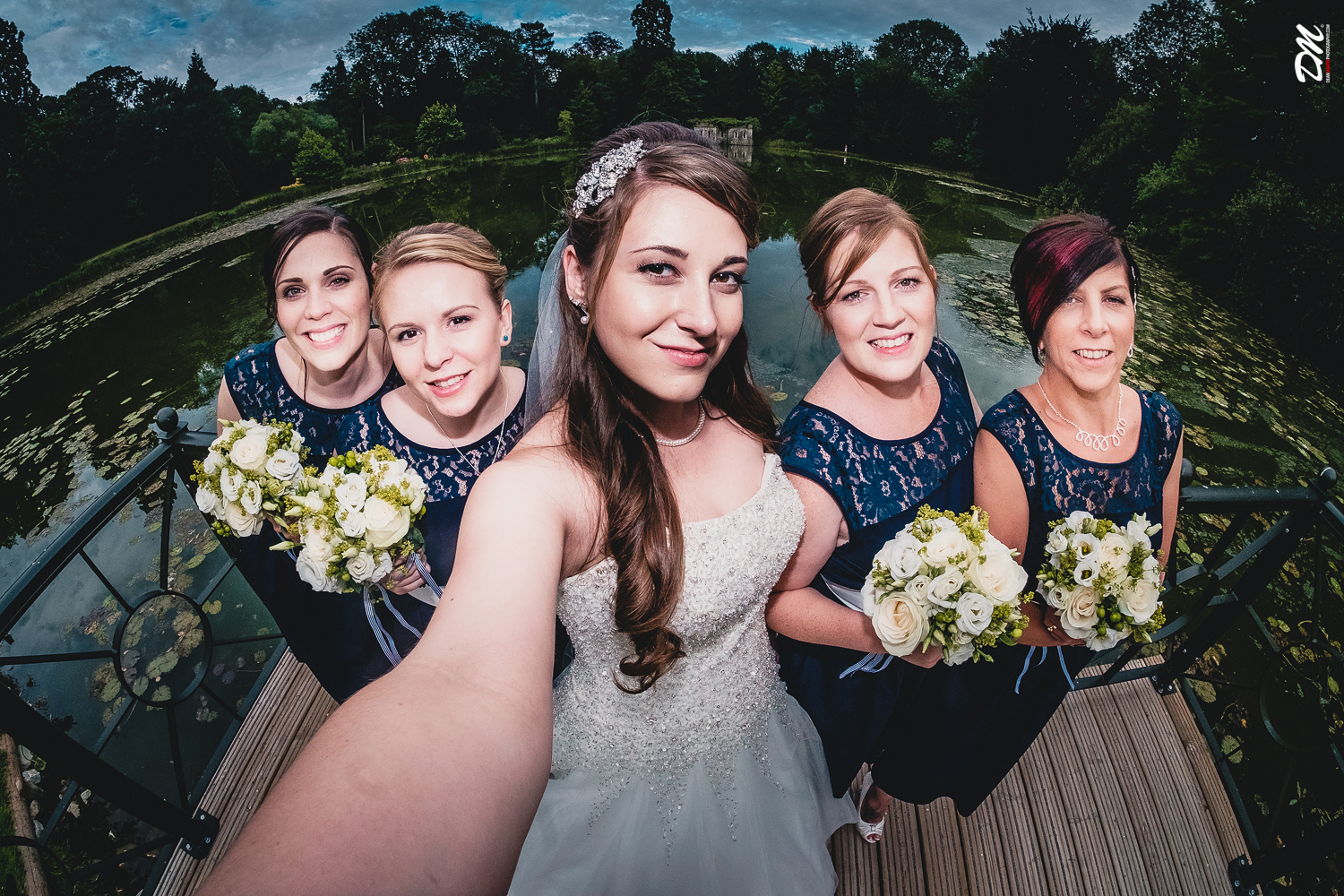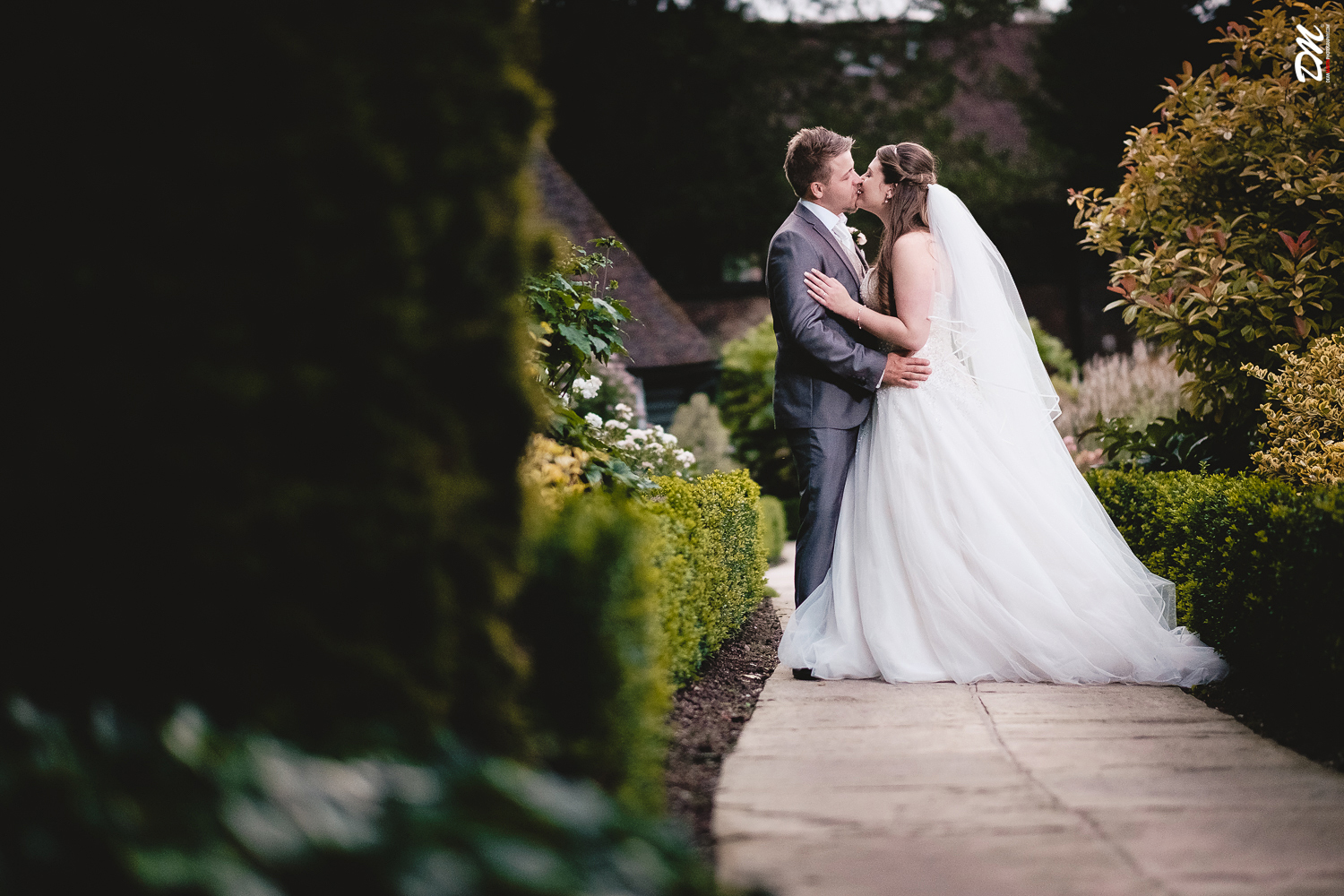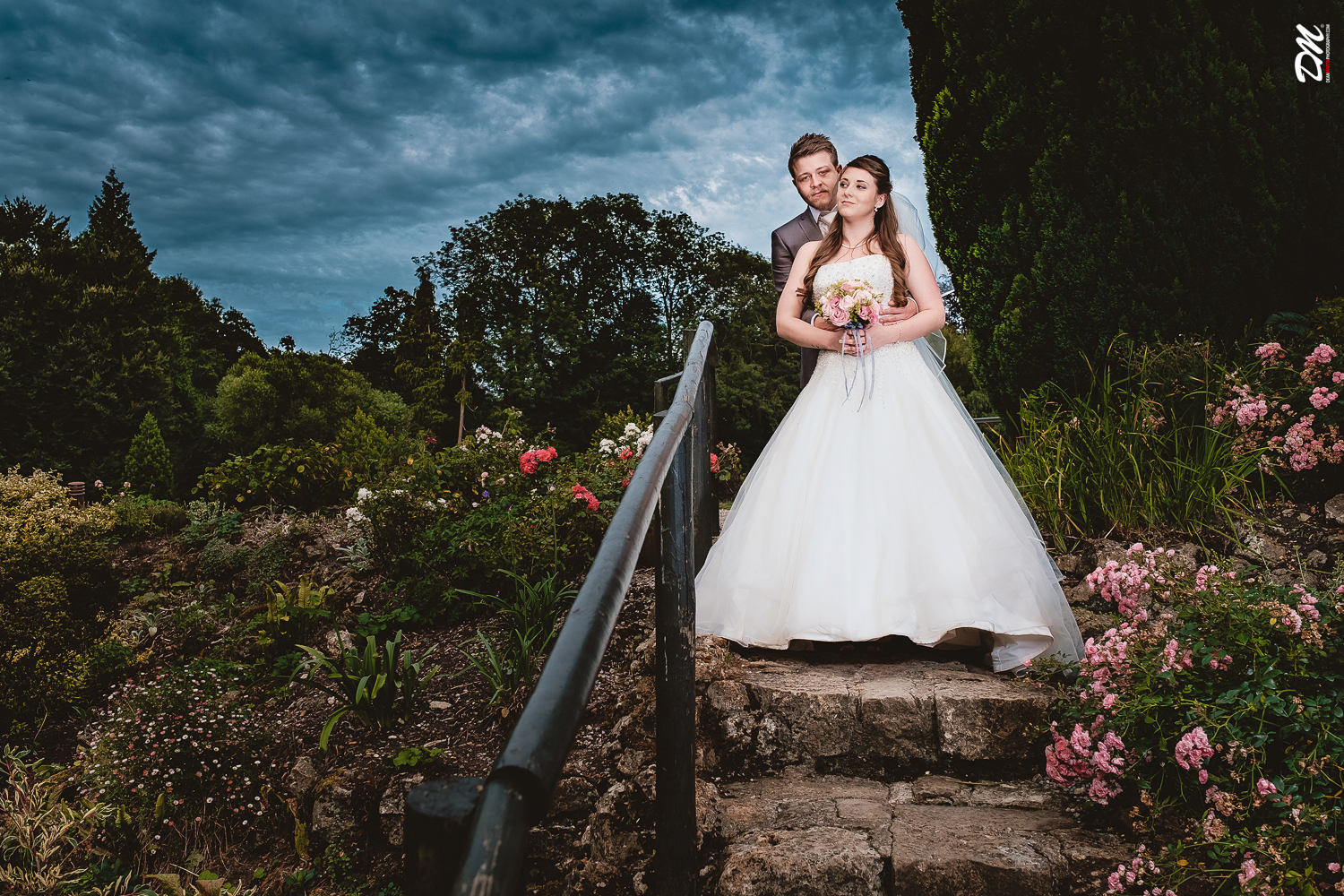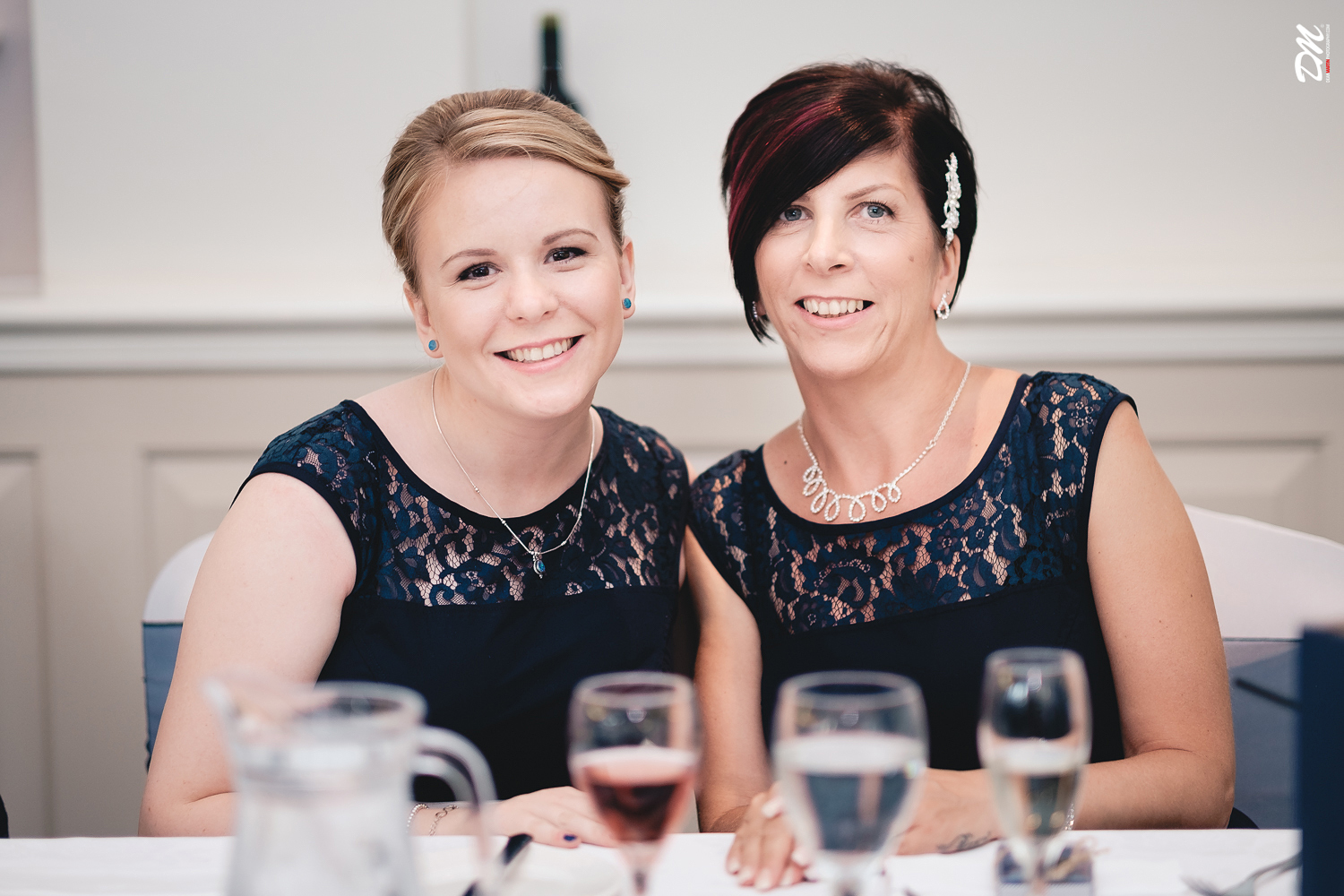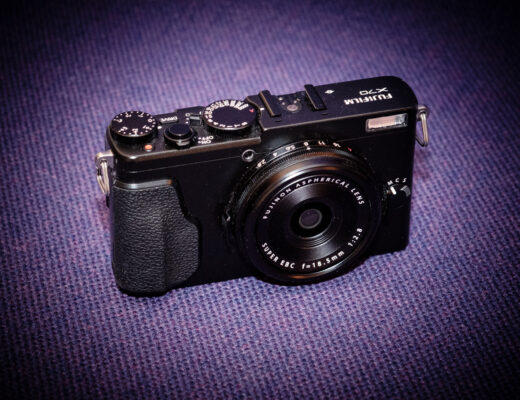Until the XF 90mm f/2.0 R LM WR was released, I relied on my 5D mark III with the 135mm f/2.0 L for my longer telephoto needs. For those times where I would shoot an entire wedding with the 23mm and 56mm, I would still have the 5D3 in my bag as a “just in case”. It wasn’t that I didn’t trust Fuji, but the fact that I felt I needed a 3rd camera for backup in case things went sour. As I now have a Fuji lens to cover my 135mm needs, I decided that this month to only take my Fujis. Out of all weddings I shoot, I decided this when the wedding was over 3 hours away. So there was no chance of me nipping home during dinner in an emergency. For me, this was my final test for Fuji.
During the entire wedding, around 12 hours, there was only 2 issues I encountered with the X-T1 and X-E2. I’ll get to those a little later. First, my tools.
- X-T1
- X-E2
- Samyang 8mm f/2.8 Fisheye
- XF 14mm f/2.8 R
- XF 23mm f/1.4 R
- XF 56mm f/1.2 R
- XF 90mm f/2.0 R LM WR
- 12 Fuji Batteries
- 2x Canon 600 EX RT (2 sets of batteries each)
- Nissin i40 (1 set of batteries)
- Yongnuo 622C and 622C TX trigger set
- Yongnuo YN 300 LED light (1 battery)
- Black Rapid DR-1
- Benro Carbon Fibre Monopod
- Macbook Pro 15”
- iPhone 5s & portable charger
- Chargers for all batteries
- Spare SD cards
- 2x GoPro 4 Silver’s with 4 batteries each & 2 memory cards each.
- GoPro accessories
- 62mm ND Filters
- 30x30cm Softbox with stand
- 42” white reflective umbrella with flash bracket
- 2x Lens cloths and blowers
- Lowepro Vertex 300 AW
- Plus a few more extras
As you can see from the list above, this is no light kit. One of the many reasons people switch to a Fuji system is the weight saving from a full DSLR kit. “IF” I had taken 2 5D3’s with full lens selection, it would have been over double the weight, so yes my kit was lighter but still no light kit when all is being carried on your back.
Below are 2 screen shots from my Lightroom catalogue. Both of them show how many shots I had taken with each body and lens throughout the entire day when I had selected the images to import.
First is the screen shot of all imported images that I had selected from the entire day. The count of f/1.0 is the Samyang 8mm as it does not transmit aperture information.
Second is the screen shot of all final edited images, which I provided the couple with.
As you can see, and exactly what I expected, my most used lenses were the 23mm and 56mm, the equivalent of 35mm and 85mm. This was not because they’re better than the others, or that they produced better results. They were my most used lenses, due to how I shoot, and having shot with a 35mm and 85mm for the majority of my photography career. Most of my shots I pre visualise either at 35mm or 85mm, then for those times I need wider or longer, I have the other lenses to fill those spots.
Both the X-T1 and X-E2 performed flawlessly (excluding my 2 gripes with Fuji, mentioned further into the article). All lenses performed as expected and I couldn’t have asked for them to work any better than what they did, as far as capturing an image goes. In controlled test conditions, the X-T1 will out perform the X-E2 regarding focusing, but in real world usage in good light, both felt equally as good as the other.
I had both cameras set to RAW shooting, Classic Chrome Simulation (Although shooting RAW, I like to preview the simulation), Manual Exposure (Indoors), Aperture Priority (Outdoors), Single Shot on Single Focus (I still don’t trust continuous focus to guarantee the shot).
Indoors I used flash on Manual (after the ceremony), as no TTL available from 3rd party flashes, except the tiny under powered Nissin i40 (i40 Review coming soon). Outdoors I used available light only, until I shot the portrait shots after the ceremony. During the ceremony, the only lens to miss focus a couple of times (thankfully not any important moment) was the 56mm. This only happened when the backlighting increased, which has been mentioned by others before. All images I shot, I over exposed by 2/3 of a stop or close to, due to the RAW files being somewhat slightly underexposed compared to JPEGS when film simulations are applied in Lightroom.
The one area I assumed both bodies would have struggled slightly is when the bridesmaids and bride were walking down the isle. I opted for single focus as in my experience so far, both bodies can lock focus quick enough and capture the moving subject a lot more accurately that continuous focus can. Continuous focus works great on the X-T1 after firmware 4.0 was installed, but this is only when the camera is in mechanical shutter only. Shooting at wide open apertures, this was not possible as at times the shutter exceeded 1/4000th. As I said, I expected them to struggle slightly, but both performed as good as I could have hoped, not missing 1 shot due to miss focus or focus hunting.
A huge upside, in fact, a huge positive for the way I shoot with Fuji, is the processing time. How much time I spend on processing files after the shoot was so much less than when I was on Canon. Photography is my full time job, and working 7 days a week isn’t unusual for me. With this, only having a couple of hours spare a day, sometimes less, it can take me a few weeks, maybe longer to have all images taken on Canon, processed and edited. I was so happy with the results from the X-T1 and X-E2 after applying the Classic Chrome film simulation, I only needed to make minor adjustments. I spent less than a quarter of the time processing and editing the Fuji RAW files than I ever did on Canon.
So in short, as far as capturing an image, capturing moments, and producing results the couple had paid for, both bodies and all lenses did their job very well, as well as any DSLR. Assuming you have enough experience with your Fuji body and lenses, and know their strengths and weaknesses, you will come to the same conclusion.
Now that I have covered what I took with me, basic settings and my impressions, I’ll go into what I didn’t like and what I NEEDED. Firstly the dislike! Battery life! We all know that Fuji batteries do not last any where near the time of a DSLR battery but WOW!! I used 4 batteries in the X-E2 and 6 batteries in the X-T1. As I was shooting outdoors, and the light was pretty bright, I needed my EVFs and screens on their max brightness. This destroyed battery life. Another note on power usage, which many sites have mentioned before, and something Fuji need to address ASAP, is the battery indicator. The battery indicator would drop to 1 bar, then within a small number of shots, the battery would be completely empty. This almost caught me out a few times, but thankfully I managed to change the battery in time.
Secondly, which to me is more important than any update Fuji has given us so far, which we still don’t have, is High Speed Sync (HSS) support. Out doors there were many times where I’d want to be shooting at f/1.2 or f/1.4. With the shutter sync speed maxed out at 1/180th when using a flash, this wouldn’t be possible without a large ND filters. When shooting at f/1.2 in bright sunlight, I use Hoya Pro1 Digital ND32 filters. This reduces the amount of light entering the lens tremendously, allowing me to reach the 1/180th sync speed. My problem came when I’d be taking shots in great light, keeping my ISO low, sticking at 1/180th to freeze subjects, then taking a shot in a shaded area, where I would need to almost max out my RAW ISO settings to expose correctly. I wanted to keep my ISO as low as I could outdoors to give me the maximum amount of dynamic range possible.
Reactions and moments change so rapidly at a wedding that one does’t have time to be switching out ND filters to expose correctly at wider apertures with 1/180th shutter speeds, and variable ND filters reduce sharpness considerably. Having no HSS support, and not wanting to mess around with ND filters, I decided to shoot natural light and keep the flash in my bag until I had control over what was happening and the environment (i.e. portrait shots). The majority of weddings I shoot are indoors, with only group shots and portrait shots being outdoors, so in most situations, having no HSS isn’t a problem as I have plenty of time to take out my ND filters, but when you don’t have time for filters, and in bright sunlight, wanting to use wide open apertures, then it’s a huge downside for me, even more so when needing to capture faster action shots with a flash. For those that prefer natural light only, this isn’t an issue, but for photographers like myself that regularly NEED HSS, it’s a huge downfall with the Fuji system and something I REALLY REALLY hope that Fuji address at some point very soon.
WHEN and IF Fuji ever address my only 2 issues that I faced, their system for me are perfect wedding tools which produce fantastic results. Their small size makes your subjects feel less intimidated, leaving you to capture more moments effortlessly, without having to chuck a huge focal length lens on your body.
These are my personal findings using the Fuji system for a wedding, others may disagree as every photographer shoots differently, and expects different things from their tools. If you do have a question, or an opinion, feel free to drop me a message in the comments or send me a tweet @DeanMartinPhoto.
Ps. A huge congratulations to Mr and Mrs Bowles. I wish you all the best in the future.
Amazon links to the main gear I use below:




